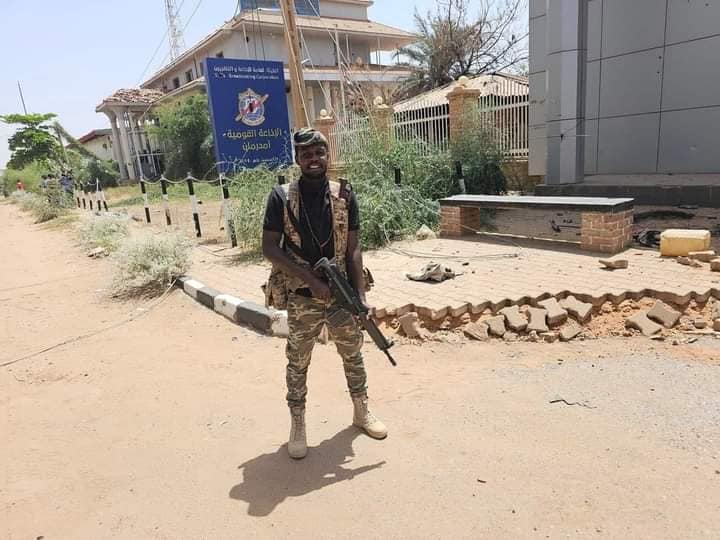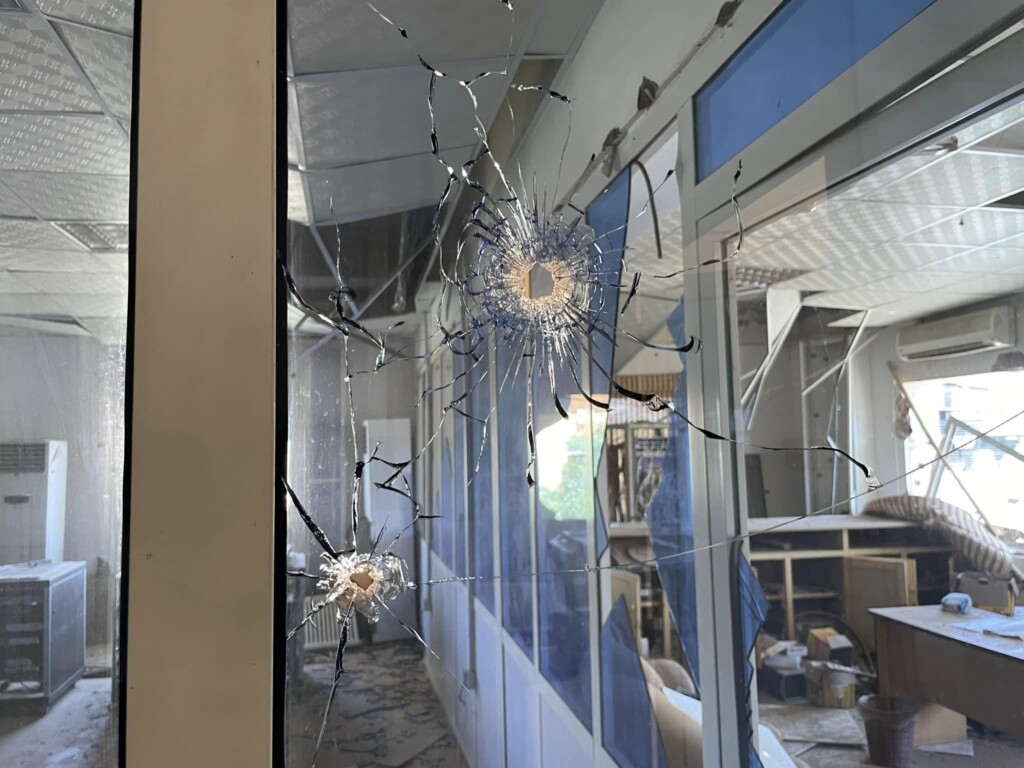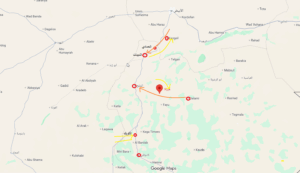Sudan broadcast building seized ‘without fighting’ raises hope on ‘archives still intact’

Army soldier in front of Radio Omdurman, March 12, 2024 (File photo: SAF via its FB page)
The Sudanese Armed Forces (SAF) taking control of the National Radio and Television Corporation in old Omdurman on Monday, after the Rapid Support Forces (RSF) occupied the buildings since the outbreak of the war in mid-April last year, has raised many questions. About the impact of the army’s victory in Omdurman, alleged detention centres within the buildings, and the condition of the nearly 100-year-old archives. News reporters yesterday showed the heavily damaged entrance and studios.
Following a SAF offensive on RSF positions in Omdurman, army soldiers early on Monday morning reclaimed the national broadcast buildings overlooking the western bank of the River Nile in the sister city of Khartoum.
Military analysts told Radio Dabanga correspondent Omar Abdelaziz on Tuesday that control over the national radio and television is considered a major advance for the SAF. “In addition, it has a major moral impact,” Maj Gen Amin Majzoub stated.
RSF Advisor Mustafa Ibrahim, however, downplayed the importance of the army’s control of the national broadcast building.
“The RSF soldiers withdrew from the site following instructions from the leadership, to preserve the truce, which the UN Security Council had called for during the month of Ramadan,” he said.
“The SAF violated the truce and attacked our forces in the vicinity of the broadcast station. When army forces entered the building, they did not find any RSF member left.”
Ibrahim stressed more than once to Radio Dabanga that “no fighting took place inside the buildings. They remained intact. In case of a battle, this building would have been completely destroyed.”
He further strongly denied rumours about the presence of civilians detained by the RSF in the buildings. “The locations of our detention centres are well known, even the Sudanese army knows them well,” he said.
When the RSF took control of the buildings of the National Radio and Television Corporation, many expected that the paramilitary group would use the equipment to broadcast statements and announce their victories.
The paramilitaries, however, transformed the buildings and the surrounding cultural institutions, the National Theatre, the Folklore Theatre, and the Artists Club into military barracks.
Reporters of Al Arabiya and Al Jazeera visited the site yesterday and showed the heavily damaged entrance to the national broadcast building and studios inside.
The Al Arabiya correspondent reported that the buildings were damaged by heavy artillery shelling. He did not describe the condition of the archives.
Abdelraouf Taha of Al Jazeera news posted photos on his Facebook page, saying that “the headquarters and main offices” of the National Radio and Television Corporation were damaged. As for the neighbouring premisses of the Blue Nile Channel studios, they “have turned into a place resembling mass graves that are difficult to enter. We send a message to voluntary organisations to speed up the collection and burial of bodies.”

National heritage
On February 10, the Sudanese Journalists Syndicate (SJS) reported that it had received information indicating that the SAF was advancing on the premises of the national radio and television. The report also said that the RSF turned the building into a detention centre, as was confirmed by testimonies from people who were held there in the early days of the war.
The journalists also expressed their concern about the danger of destroying or damaging the archives “which represent a political, cultural, and social legacy for the entire Sudanese nation” and called on the warring parties to spare the building.
Lugman Ahmed, director of the Sudanese Broadcasting Corporation (SBC) and former director general of the National Radio and Television Corporation, expressed his happiness that the national broadcast building has been spared any clashes between the warring parties.
“I really hope that the inside of the building remained intact,” he told Radio Dabanga yesterday.
“To explain the location of the valuable materials in the buildings, we need to draw a map. The radio buildings are at the southern part of the premisses, and the television buildings are in the north. At the southern end of the radio buildings, you find the radio archive, which contain all the radio broadcasts from its founding almost 100 years ago to the present. All tapes that contain cultural, heritage and lyrical materials are located in this multi-storey building at the southern end of the radio premisses.”
Digitised
Ahmed said that more than 30 per cent of the radio archives has already been digitised. “The project was funded by the British government,” he explained.
“But the largest part has not been done yet, which is very unfortunate as all of these audio tapes are kept in unsuitable environmental conditions. They are exposed to dust and dirt and lack a cooling system. It is true that a limited portion of these materials was exposed to a fire some years ago, but the archive as a whole was not affected. “
The former director expressed his hope that the archives have not been damaged by gunfire, and called for “quick emergency action, including the provision of ventilation for the buildings, to preserve these rich and important audio testimonies of the history of Sudan”.
He explained that the television buildings hold two important archives. “The first one contains film productions since 1962 until now. The television began its broadcasts earlier, but this was done on-air, and it was not recorded until the early seventies.
“On the southwest side, there is a third large archive that contains all the 2-inch and 3-inch films, and large and small Betacam films. The majority of the contents of this archive dates from the 1970s, 1980s, and 1990s, as well as more recent recordings put on memory devices. This archive also requires more care and a cool environment and needs care. These materials would be digitised in a second stage, following the completion of the film production archive.”











 and then
and then